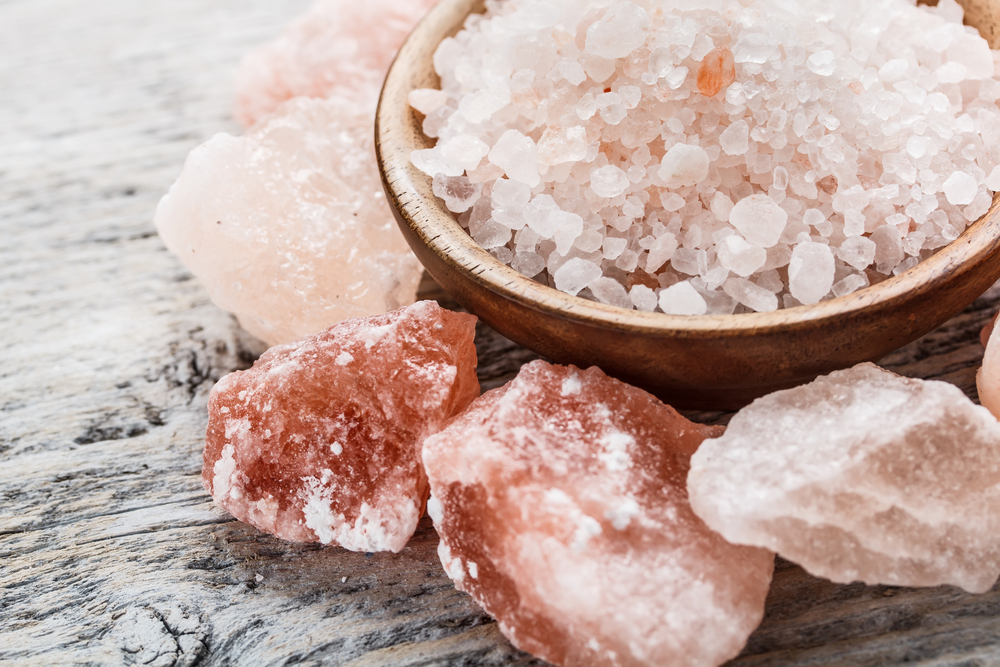
Salt therapy or Halotherapy is a natural treatment method involving the inhalation of salt-infused air. It has been used for centuries to treat respiratory conditions such as bronchial asthma and chronic bronchitis, skin conditions, as well as stress-related ailments. In today’s post, we will explore what halotherapy is, how it works, and its benefits for those with bronchial asthma and chronic bronchitis.
What Is Halotherapy?
As briefly mentioned earlier, halotherapy involves inhaling salt-infused air in a controlled environment, such as a salt cave or a salt room. The salt is typically either ground into fine particles and dispersed into the air by a halogenerator or dissolved in water and diffused into the air as a mist. The salt particles are believed to have therapeutic properties that can help to alleviate respiratory and skin conditions, as well as reduce stress.
What is Halogenerator?
A halogenerator is a device used in salt therapy that looks like a small machine with a container on top filled with salt. When turned on, it grinds the salt into tiny particles and disperses them into the air. It uses a fan to spread and distribute the salt particles throughout the room. You can find halogenerators in salt rooms, salt caves, or other spaces dedicated to salt therapy. Moreover, halogenerators are becoming more popular as people look for natural ways to improve their respiratory health and alleviate symptoms of the conditions mentioned above.
How Does Halotherapy Work?
When salt particles are inhaled, they can help to reduce inflammation and loosen mucus in the airways. This can make it easier for individuals with respiratory conditions to breathe and reduce the frequency and severity of symptoms. In addition, salt particles can also help to improve skin conditions by reducing inflammation and promoting skin hydration.
What type of salt is used for Halotherapy?
There are three types of salts used in halotherapy including Himalayan salt, Dead Sea salt, and Epsom salt.
Himalayan salt is the most preferred type of salt. It is prized for its purity and rich mineral content. Read more about the benefits of Himalayan salt room therapy here.
Dead Sea salt is known for its high concentration of minerals like magnesium and calcium, and Epsom salt, which contains high levels of magnesium and has been used for centuries to soothe sore muscles and promote relaxation.
Benefits of Halotherapy for Bronchial Asthma and Chronic Bronchitis
For individuals with bronchial asthma or chronic bronchitis, halotherapy can provide several benefits. According to a study published in the International Journal of Chronic Obstructive Pulmonary Disease, halotherapy can help to improve lung function and reduce symptoms in individuals with chronic bronchitis. Another study published in the Journal of Aerosol Medicine and Pulmonary Drug Delivery found that halotherapy can improve lung function and reduce the need for medication in individuals with bronchial asthma.
Adding onto these respiratory benefits, halotherapy can also help reduce stress and promote relaxation. Stress can exacerbate respiratory symptoms, and reducing stress levels can help to alleviate these symptoms. Halotherapy can also help to promote better sleep, which is essential for individuals with respiratory conditions.
What Can You Expect During a Halotherapy Session?
During a halotherapy session, individuals typically sit in a salt room or salt cave for 30 to 60 minutes. The environment is designed to be relaxing, with dim lighting and soothing music playing in the background. Some salt rooms also offer guided meditation or yoga classes to help individuals further relax and reduce stress.
The halogenerator does its work and without any hassle, the salt particles are spread evenly in the air. These salt particles are typically too small to see or taste, so individuals do not need to worry about inhaling large particles or experiencing a salty taste in their mouth.
Most individuals find halotherapy to be a relaxing and enjoyable experience, and many report feeling better after just one session. However, it is important to note that halotherapy is not a substitute for medical treatment, and individuals with respiratory conditions should continue to follow their treatment plan as prescribed by their healthcare provider.
Are there any risks of Halotherapy?
It’s evident that Halotherapy has surfaced as a natural and non-invasive way to alleviate respiratory symptoms and promote relaxation. However, as with any health treatment, there may be risks or side effects associated with halotherapy.
One of the primary concerns about halotherapy is the risk of inhaling too much salt, which could irritate the lungs and worsen respiratory symptoms instead of healing them. Additionally, there is some concern that the high levels of sodium in the air could be harmful to people with certain medical conditions, such as high blood pressure or kidney disease. There are also questions about the cleanliness of salt rooms and the potential for infection or contamination.
Despite these concerns, many people continue to avail themselves of halotherapy. Experts believe that halotherapy is generally safe and well-tolerated, especially when conducted in a reputable and hygienic environment.
FAQs
How frequently can I take halotherapy?
It depends on individual health needs and preferences. Some people may benefit from weekly or biweekly sessions, while others may prefer more frequent sessions. It’s important to discuss frequency with a healthcare provider or a qualified halotherapy practitioner.
Who should avoid halotherapy?
People with certain medical conditions, such as lung infections, tuberculosis, and some forms of cancer, may not be good candidates for halotherapy. Additionally, pregnant women and young children may need to take special precautions or avoid halotherapy altogether.
–



